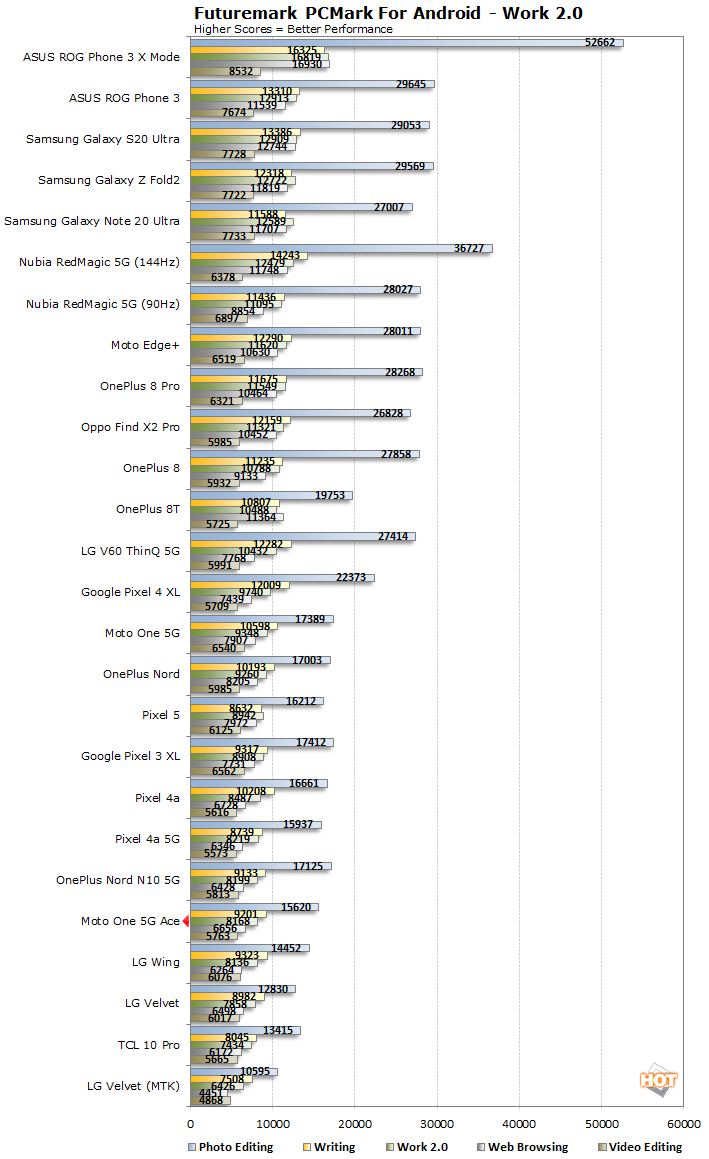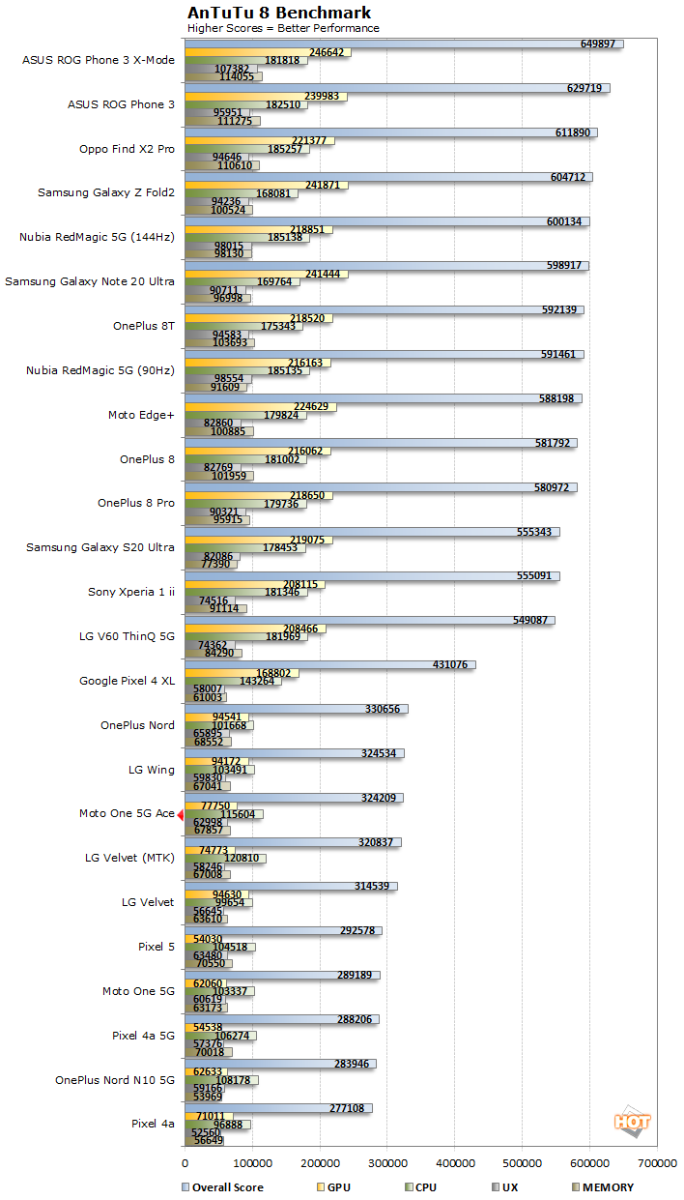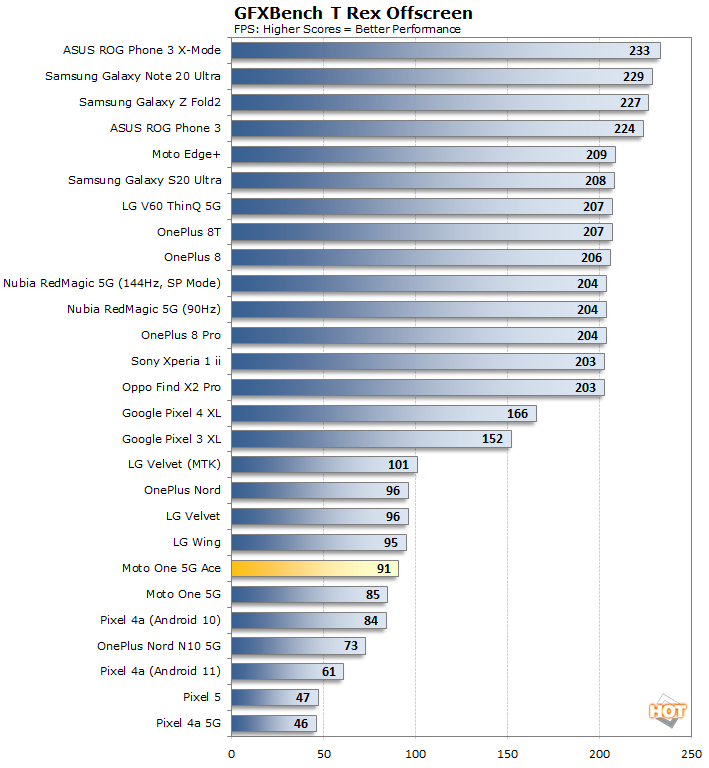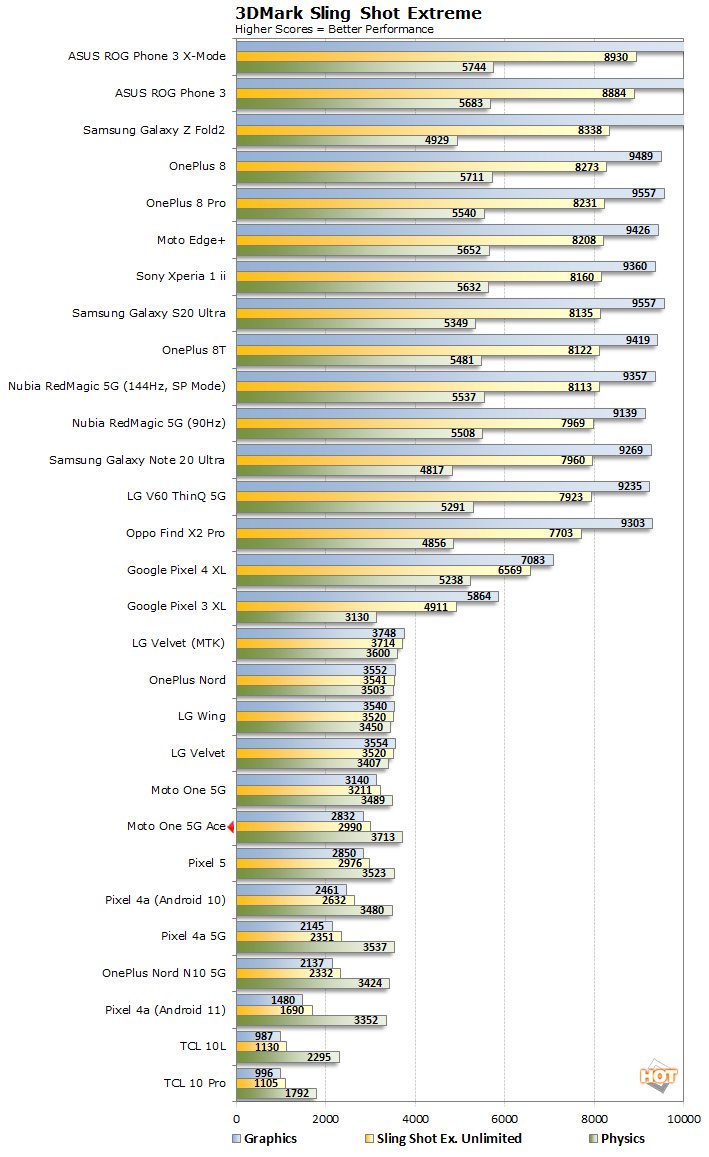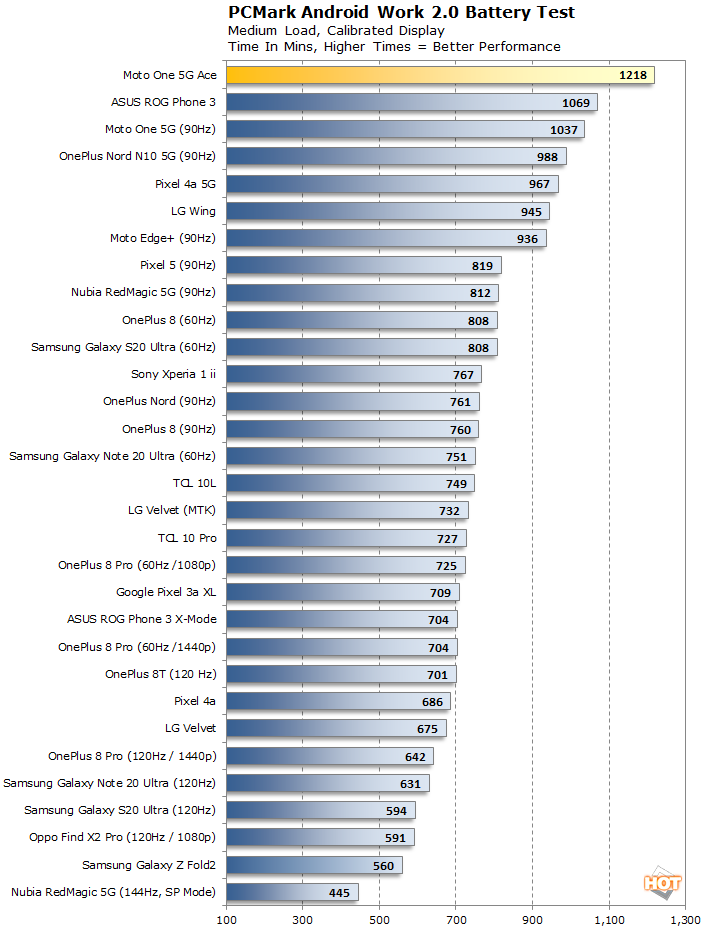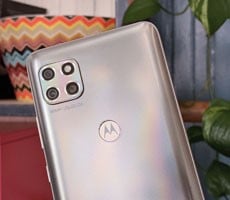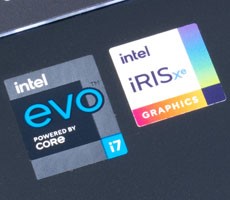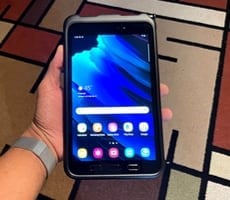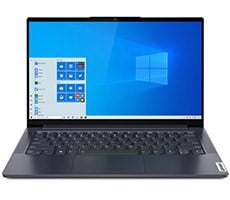Moto One 5G Ace Audio, Data, and Call Reception
We used the Moto One 5G Ace in San Francisco, primarily on T-Mobile’s
sub-6GHz 5G network, and didn’t experience any issues with call
quality or data speeds. Unfortunately, we didn’t have any
5G-compatible SIMs to test 5G on AT&T or Verizon, but 4G LTE
was problem-free on these networks. The Ace includes broad support
for sub-6GHz 5G and 4G LTE bands in the US, and even legacy CDMA
bands for Verizon.
On the audio front, the Ace only has a mono speaker, and while
it’s loud and clear enough for calls, it isn’t well suited for
music or anything much beyond the occasional TikTok video. At
least the headphone jack sounds better than most. But while the
DAC is clean, the amp isn’t meant to power high-impedance
headphones or earbuds. The Ace also supports aptX HD and LDAC for
lossless audio over Bluetooth.
Moto One 5G Ace Performance
Unlike the
Snapdragon 765-equipped
One 5G, the Ace packs Qualcomm’s latest mid-range 5G SoC, the
Snapdragon 750G. And based on our benchmark results, it generally
slots near or just below the Snapdragon 765G -- and well above
the
Snapdragon 690 found on the
OnePlus Nord N10 5G. That’s not
too surprising, but clearly, the lines between the Snapdragon
765G and the Snapdragon 750G are quite blurred.
For North America, Moto paired this chip with 6GB of RAM and 128GB
of storage (expandable via microSD up 1TB). That’s better than the
4GB RAM on the One 5G, although the Ace comes in a 4GB / 64GB
version in other markets. Perceived performance is excellent. This
phone ran our standard collection of apps without skipping a beat.
And while it isn’t targeting hard-core gamers, it handled PUBG
Mobile just fine.
 |
| Futuremark
PCMark For Android |
| General Purpose Pocket Computing
Performance Metrics |
|
Futuremark's PCMark for Android is
an excellent suite of tests if you want to benchmark a wide
range of tasks on any handset -- things like image and video
editing, as well as lighter-duty, everyday workloads such as
email and web browsing. When you see the test running live, it's
clear the scripted application tests are carefully selected and
tuned to make use of the each mobile platform in a very
controlled way...
We were expecting the Ace to score above the
Snapdragon 690-equipped OnePlus Nord N10 5G in this particular test, but it didn't. That being said, it still scores above the Snapdragon 765G-equipped
LG Wing and
Velvet. While the Snapdragon 750G
powering the Ace clearly doesn't match the performance of
current flagships for the workloads used in PCMark for Android,
these results are still respectable.
 |
| AnTuTu
8 And AITuTu |
| Platform Benchmarks |
|
AnTuTu’s latest benchmark returns a number of metrics
ranked with somewhat nebulous scores, rather than frame rates
or time to complete. Here we're running the latest version of
AnTuTu across multiple Android devices. AnTuTu returns four
top level performance results which are all included here:
CPU, RAM, 3D, UX (or User Experience), along with a total
score...
We were expecting more of the same
in the AnTuTu benchmark. But here, the Ace slots
right in-between the Snapdragon 765G-equipped LG Velvet and
OnePlus Nord. It even beats its older sibling, the Snapdragon 765-equipped
Moto One 5G.
Normally we have an AiTuTu result here. AITuTu evaluates the AI
performance of a device by leveraging two mainstream neural
network models for machine learning and
AI -- Inception v3
for Image Classification and MobileNet-SSD for Object Detection.
The benchmark determines the device’s accuracy and speed when
inferring data from each workload.
Unfortunately, while we were able
to start AITuTu on the Ace, it just kept hanging
while loading just before starting the image classification
test. The Ace remained responsive, but AITuTu never
completed. We tried both the latest APK from AnTuTu and an older
known working APK without luck.
 |
| 3D
Graphics Benchmarks: 3DMark And GFX Bench |
| Pushing The Pixels |
|
Next we're checking how the Ace compares in GFXBench, which has been one of the
standard mobile graphics/gaming performance benchmarks for
years. To ensure that display refresh (v-sync) and resolution
aren't limiting factors, we're comparing off-screen test results
here. GFXBench tests OpenGL ES graphics workloads and we're
specifically testing OpenGL ES 2...


Compared to today's flagships,
graphics performance clearly isn't the Snapdragon 750G's
strongest suit. Here, the Ace's scores squarely between the
Snapdragon 690-equipped OnePlus Nord N10 5G and the Snapdragon
765G-equipped OnePlus Nord. It even beats the Snapdragon 765-equipped Moto One 5G in the TRex test.
3DMark Sling Shot is a newer benchmark module that's been added
to the 3DMark mobile suite. Unlike previous gen 3DMark mobile
tests, Sling Shot is a much more advanced OpenGL ES 3.1 and
Metal API-based benchmark that employs more advanced rendering
techniques, like volumetric lighting, particle illumination,
multiple render targets, instanced rendering, uniform buffers
and transform feedback.
 3DMark Sling Shot Extreme Benchmark
3DMark Sling Shot Extreme Benchmark
We're running this test in off-screen mode once again to
remove display resolution differences from the equation.
This lets us compare cross-platform results more reliably...
Obviously, the Ace also
performed worse than current flagships in these 3DMark tests. Here again, it
scored between the Snapdragon 690-equipped OnePlus Nord N10 5G and the Snapdragon 765G-equipped OnePlus Nord, and managed to beat the Snapdragon 765G-equipped
Pixel 5 (running Android 11).
Moto One 5G Ace Other Features and Battery Life
As for the rest of the Ace's specs, you’ll find WiFi 5 (802.11ac),
Bluetooth 5.1 (LE), NFC, FM radio, and dual-band A-GPS/GLONASS/Galileo
positioning, an FM radio, plus the usual array of sensors (accelerometer,
gyroscope, proximity, ambient light, compass, and barometer). The
rear-mounted fingerprint sensor is quick and reliable, but haptics
aren’t spectacular -- Moto is clearly using a basic vibration
motor here.
Battery life is where the Ace really lives up to its name. It
(ahem...)
aced our PCMark battery test with a score of 20 hours and
18 minutes, replacing ASUS’ mighty
ROG Phone 3 in the top spot.
While the large 5000mAh cell and 60Hz refresh rate surely help,
the Snapdragon 750G is obviously quite efficient. Basically, the
Ace will easily last two days on a full charge, and when it’s time
for a refill, it supports 15W (USB PD) charging.
Next up: the software, pricing, and the verdict...
